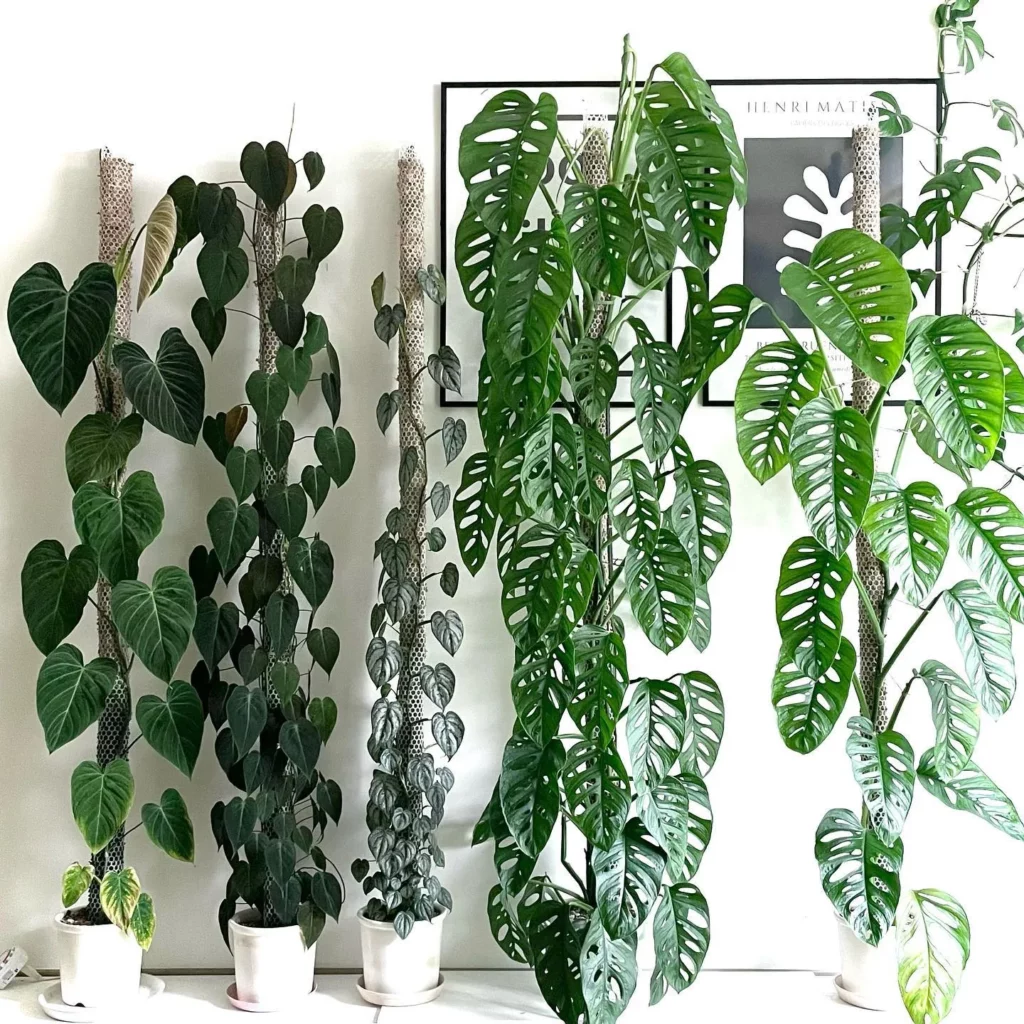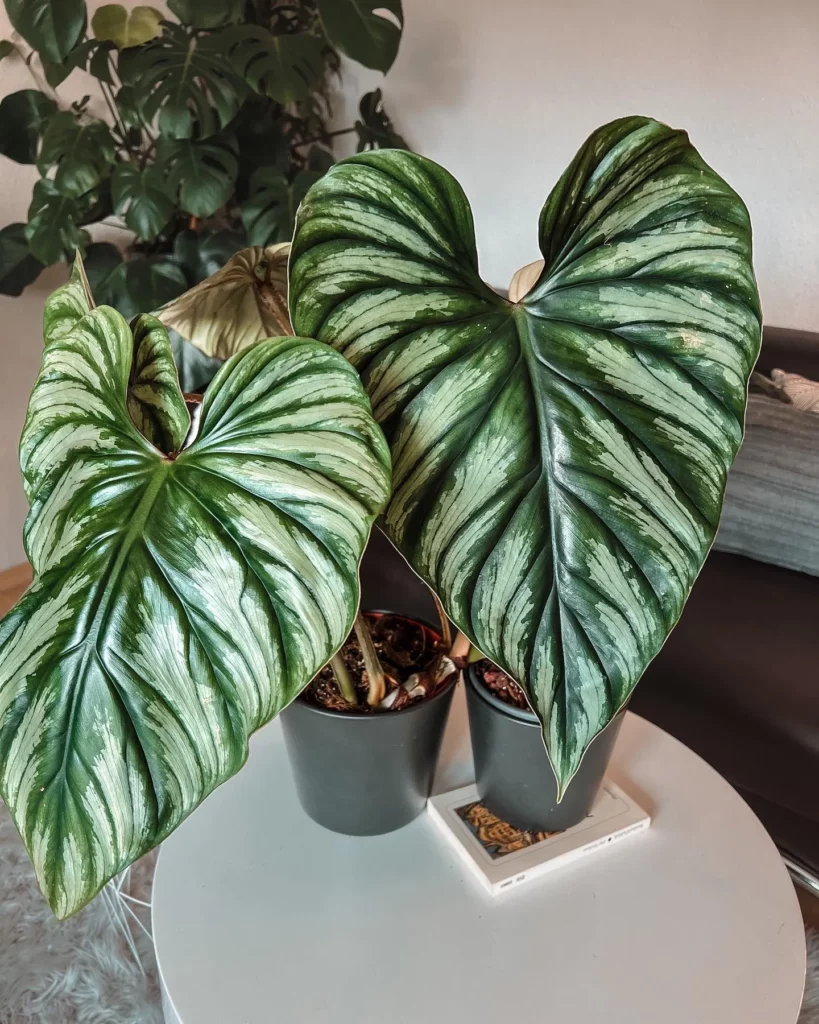Propagating Philodendron in water is a simple and effective method to expand your plant collection. One of the most common varieties for water propagation is the Philodendron hederaceum, also known as heart-leaf philodendron or sweetheart plant. This low-maintenance houseplant can be easily propagated by rooting stem cuttings in water.
It is best to propagate philodendron in the spring or summer when the plant is actively growing. Make sure to choose healthy stems with several leaves on the mother plant and cut them just below a leaf node. Remove the leaves from the bottom half of the stem and place the cuttings in a glass or jar filled with water, ensuring that all the leaf nodes are submerged.
Keep the jar in a warm place with bright, indirect light and change the water regularly. In a few weeks, you should notice small white roots growing from the nodes, indicating that the cuttings are ready to be planted in soil.
Water propagation is an excellent technique for indoor gardeners who want to expand their Philodendron collection. It provides a clear view of the root development process and gives you a sense of accomplishment as you witness new growth. With proper care and patience, you can successfully propagate Philodendron in water and create a thriving indoor garden.
When to Propagate Philodendron



The best time to propagate Philodendron is in the spring or summer when the plant is actively growing. This is when the plant is best able to produce new roots and establish itself. If your plant is looking long and leggy, it may be time for pruning, which is also best done during these seasons. Propagating in the fall or winter is possible but may take longer for the cuttings to grow roots. It is important to note that you should only take cuttings from a healthy, mature plant to avoid any harm to the mother plant or the spread of disease or pests.
No products found.
Choosing the Right Philodendron Variety for Propagation

The Philodendron genus offers a wide range of varieties for propagation, allowing you to expand your plant collection with ease. When selecting a variety to propagate, consider the growth habit and leaf shape to determine the best fit for your preferences and available space.
For those looking to create lush hanging displays or fill empty corners, trailing philodendrons are an excellent choice. These varieties feature heart-shaped leaves that cascade from long, trailing vines, adding a touch of elegance to any indoor space. One popular trailing variety is Philodendron hederaceum, also known as the heart-leaf philodendron or sweetheart plant.
If you prefer a more compact and upright growth habit, self-heading philodendrons are an ideal option. These varieties, such as Philodendron ‘Birkin’, Philodendron ‘Congo Rojo’, and Philodendron ‘Pink Princess’, have a thicker central stem and grow in a bushy manner, making them perfect for adding a focal point to your indoor garden.
Here are some popular trailing philodendrons and self-heading philodendrons that are suitable for propagation in both water and soil:
| Trailing Philodendrons | Self-Heading Philodendrons |
|---|---|
| Velvet Leaf Philodendron (Philodendron hederaceum) | Philodendron ‘Birkin’ |
| Philodendron ‘Brasil’ | Philodendron ‘Congo Rojo’ |
| Philodendron brandtianum | Philodendron ‘Pink Princess’ |
These varieties offer a range of leaf colors and patterns, allowing you to create a diverse and visually stunning collection of propagated philodendrons.
Materials Needed for Philodendron Propagation


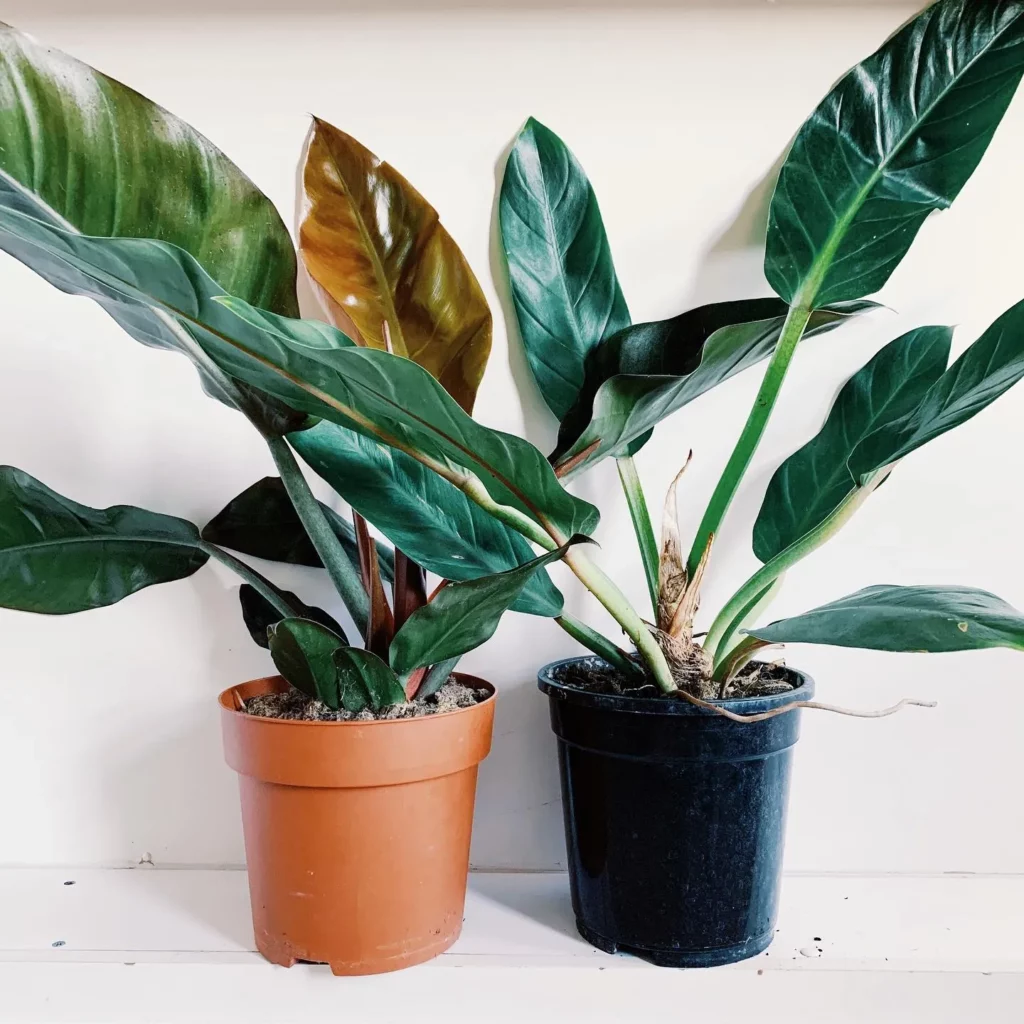
To propagate Philodendron, you will need a few essential materials. These include:
- Clean and sharp scissors or pruning shears for taking stem cuttings
- A glass or jar for water propagation
- Potting mix for soil propagation
- Small plant pots
- Optional rooting hormone
| Materials |
|---|
| Clean and sharp scissors or pruning shears |
| Glass or jar for water propagation |
| Potting mix for soil propagation |
| Small plant pots |
| Optional rooting hormone |
Water Propagation Method for Philodendron
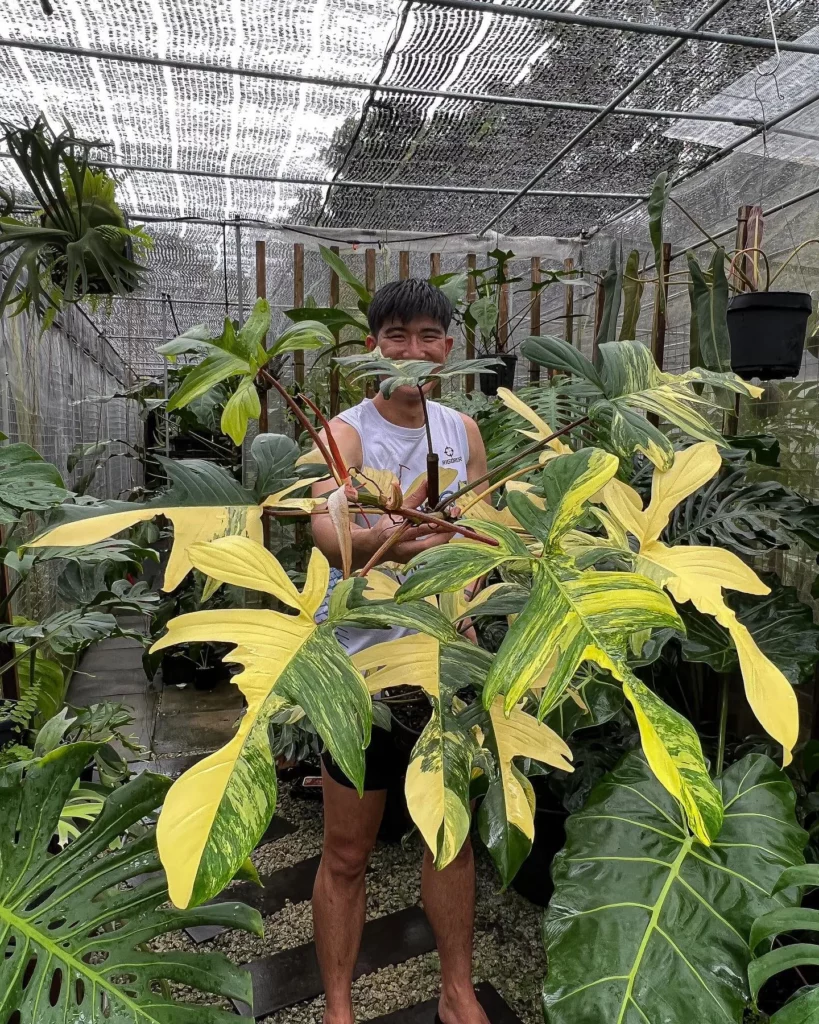
Water propagation is a popular and straightforward method for propagating Philodendron plants. To start, choose healthy stems with several leaves from the mother plant. Use clean, sharp scissors or pruning shears to take six-inch stem cuttings just below a leaf node. Remove the leaves from the bottom half of the stem to focus energy on root development.
Next, prepare a glass or jar filled with water. It is important to submerge all the leaf nodes of the stem cuttings in the water. This encourages the growth of new roots. Place the jar in a warm location with bright, indirect light. This will provide the necessary conditions for successful propagation.
If the water becomes cloudy, it is advisable to change it to maintain a clean environment. After a few weeks, you will start to see small white roots emerging from the leaf nodes. Once the roots are at least one inch long, they are ready for the next step.
Now, it is time to plant the rooted cuttings in soil. Choose a pot with moist potting mix, and make sure all the roots are covered below the soil line. This will provide the necessary support and nutrients for the cuttings to develop into healthy plants.
During the first week of planting, maintain even moisture in the soil to facilitate root establishment. After that, care for the plant as usual, providing the appropriate watering, lighting, and temperature conditions for Philodendron plants.
| Steps for Water Propagation |
|---|
| 1. Choose healthy stems with several leaves from the mother plant. |
| 2. Take six-inch stem cuttings just below a leaf node. |
| 3. Remove the leaves from the bottom half of the stem. |
| 4. Place the cuttings in a glass or jar filled with water. |
| 5. Submerge all the leaf nodes in the water. |
| 6. Keep the jar in a warm place with bright, indirect light. |
| 7. Change the water if it becomes cloudy. |
| 8. After a few weeks, roots will start to grow from the nodes. |
| 9. Once the roots are at least one inch long, plant the cuttings in moist potting mix. |
| 10. Make sure all the roots are below the soil line. |
| 11. Maintain even moisture in the soil for the first week. |
| 12. Care for the plant as usual. |
Soil Propagation Method for Philodendron



Another effective method for propagating Philodendron is through soil propagation. This method utilizes stem cuttings and a suitable potting mix to encourage the growth of new roots. Here’s how you can propagate Philodendron using the soil propagation method:
1. Start by selecting healthy stems from the mother plant. Choose stems that have several leaves and are approximately six inches long.
2. Remove the leaves on the lower half of each stem cutting. This allows the cutting to focus its energy on root growth rather than sustaining unnecessary foliage.
3. Prepare a small plant pot with a well-draining potting mix. Leave about an inch of space from the rim to allow for watering and root growth.
4. Moisten the potting mix, ensuring that it is moist but not waterlogged. This provides an ideal environment for root development.
5. With a finger or a small tool, create holes in the potting mix that are a few inches deep. These holes will accommodate the stem cuttings.
6. Plant each stem cutting in its respective hole, making sure that each node is below the surface of the soil. Gently pat the soil around the stem to secure it in place.
7. Place the pot in a warm and humid location that receives bright, indirect light. This will allow the cuttings to establish roots and promote healthy growth.
8. Maintain the soil evenly moist, but avoid overwatering, as excessive moisture can lead to root rot. Regularly check the moisture level by touching the top inch of soil, and water accordingly.
9. In a few weeks, you should begin to see new growth and the formation of roots. This indicates that the propagated Philodendron cuttings have successfully rooted in the potting mix.
10. Once the roots are established, continue caring for the plant as you would for mature Philodendron plants, providing adequate light, water, and nutrient requirements.
| Pros of Soil Propagation | Cons of Soil Propagation |
|---|---|
| – Provides a more natural environment for root development | – May require additional materials such as rooting hormone |
| – Allows for a seamless transition from propagation to regular plant care | – Requires monitoring of moisture levels to avoid overwatering |
| – Suitable for Philodendron varieties with shorter internodes | – Initial root development may take longer compared to water propagation |
Proper Care for Propagated Philodendron Cuttings

Once you have successfully propagated Philodendron cuttings, it is important to provide them with proper care for them to thrive. Proper care includes attention to watering, light, and temperature.
When it comes to watering your propagated Philodendron cuttings, it is crucial to keep the soil or water evenly moist. However, it is equally important to avoid over-saturating the substrate. Philodendrons prefer a consistently moist environment, so monitor the moisture levels and adjust your watering routine accordingly.
Philodendrons thrive in bright, indirect light. Place your cuttings in an area that receives ample sunlight without direct exposure to prevent leaf burn. While Philodendrons can tolerate some low-light conditions, their growth may be slower in such environments.
Temperature is another key factor in caring for your propagated Philodendron cuttings. Aim to keep the temperature between 65-85°F (18-29°C). These plants prefer a warm climate and may not thrive if exposed to extreme temperatures. Avoid placing the cuttings near cold drafts or in direct sunlight, as this can cause stress and hinder growth.
With the right care for your propagated Philodendron cuttings, they will develop into healthy and mature plants, bringing you joy and beauty in your indoor garden.
| Care Tips for Propagated Philodendron Cuttings | |
|---|---|
| Watering | Keep the soil or water evenly moist, but not overly saturated. |
| Light | Place the cuttings in a location with bright, indirect light. |
| Temperature | Maintain temperatures between 65-85°F (18-29°C). |
Propagating Philodendron Varieties Through Division



When propagating Philodendron, it is important to consider whether your plant is a trailing or non-trailing variety, as the propagation methods may vary. Trailing Philodendrons require totem or trellis support to grow upwards, while non-trailing varieties can support themselves for a few years without assistance. For non-trailing varieties, one method of propagation is division.
During repotting, you can separate offshoots from the parent plant and repot them in slightly larger containers than their existing roots. This method is less invasive and allows for the propagation of healthy, mature Philodendrons.
Division is a great propagation method for non-trailing Philodendron varieties. It gives you the opportunity to create new plants from offshoots while ensuring that the propagated plants are in good health. By carefully separating the offshoots from the parent plant and repotting them in larger containers, you can encourage the growth of mature Philodendrons.
Propagating Philodendron Varieties Through Stem Cutting
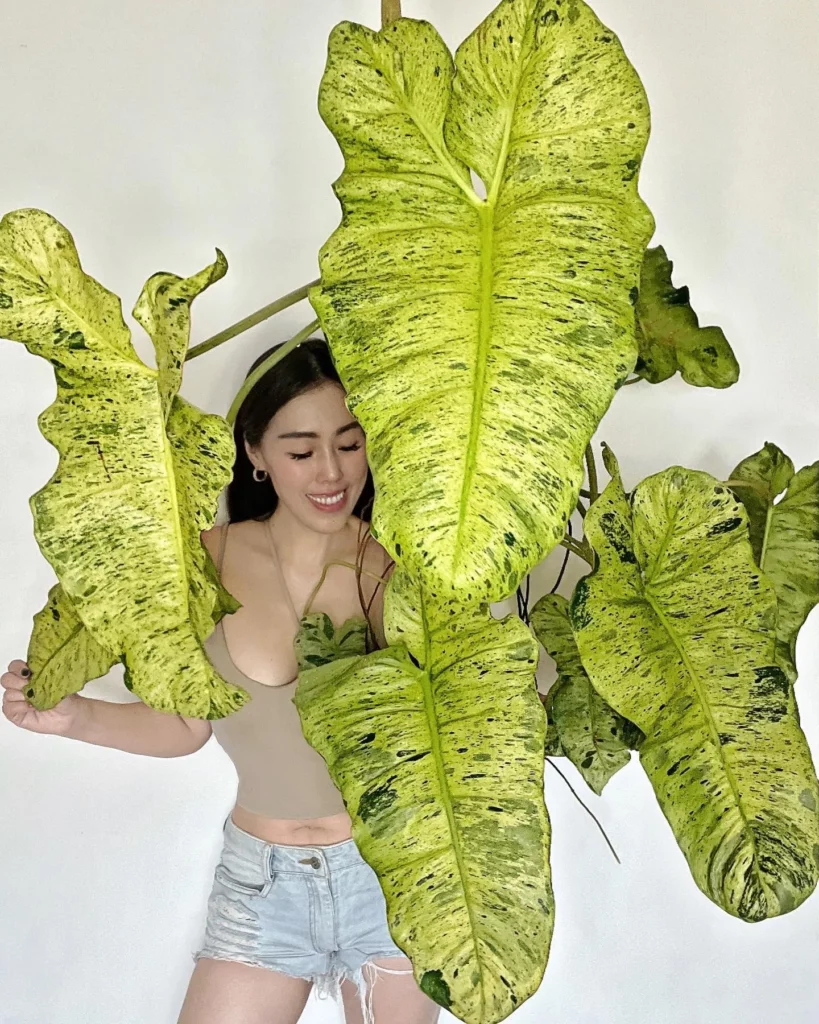
Another effective method for propagating non-trailing Philodendrons is through stem cutting. This technique allows you to create new plants from healthy stems with the potential for aerial roots. To begin, carefully select a stem cutting with multiple nodes and visible aerial roots.
To determine the appropriate cutting length, make a diagonal cut just below the selected node. This angled cut helps maximize the area available for rooting. It is essential to use clean and sharp scissors or pruning shears to ensure a smooth and precise cut.
No products found.
Once you have your stem cutting, place it in a clean jar filled with room temperature water. The submerged nodes and aerial roots are crucial for root development. To maintain the water’s freshness, consider changing it every few days.
This propagation method allows you to observe the growth of the roots before transitioning the cutting to soil. As the roots reach approximately one inch in length, you can safely transplant the cutting into moist, well-draining soil.
When planting the cutting in soil, ensure that the nodes and the area where the roots have developed are below the soil surface for optimal growth. Water the newly planted cutting as you would for a mature Philodendron plant, taking care not to overwater.
Philodendron Propagation Tips and Timing
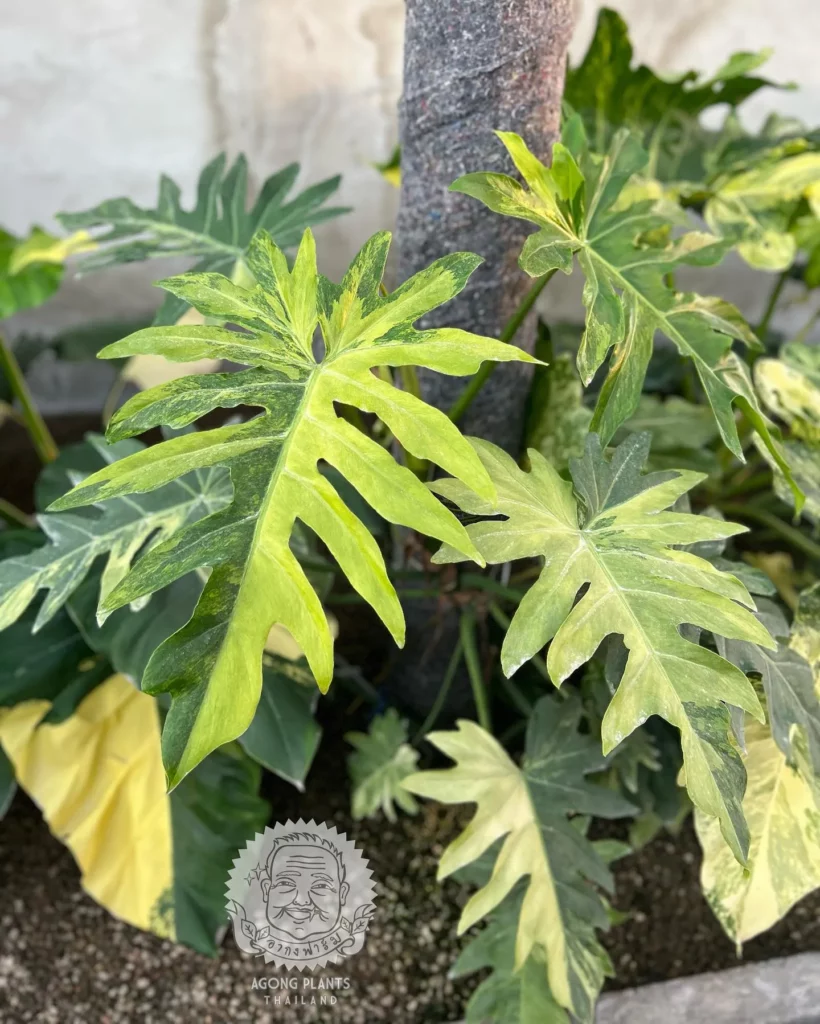
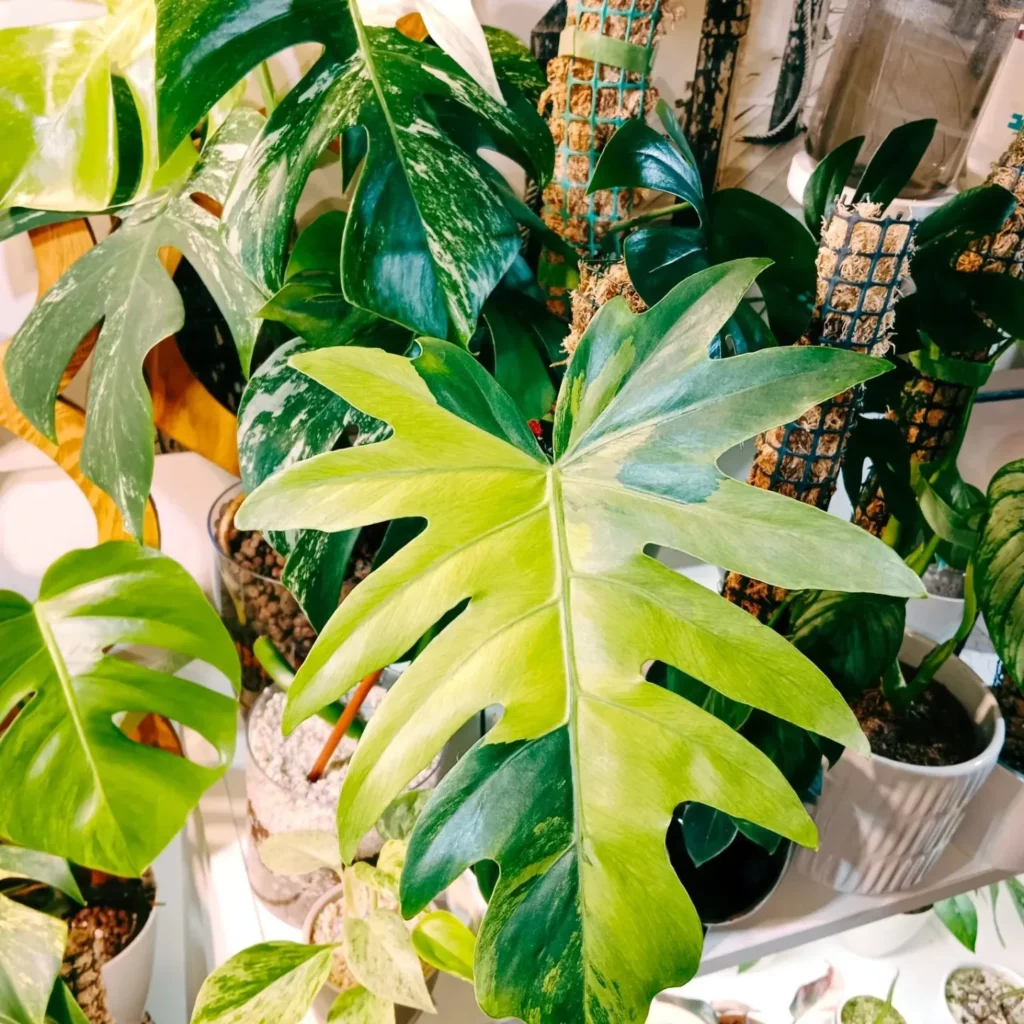
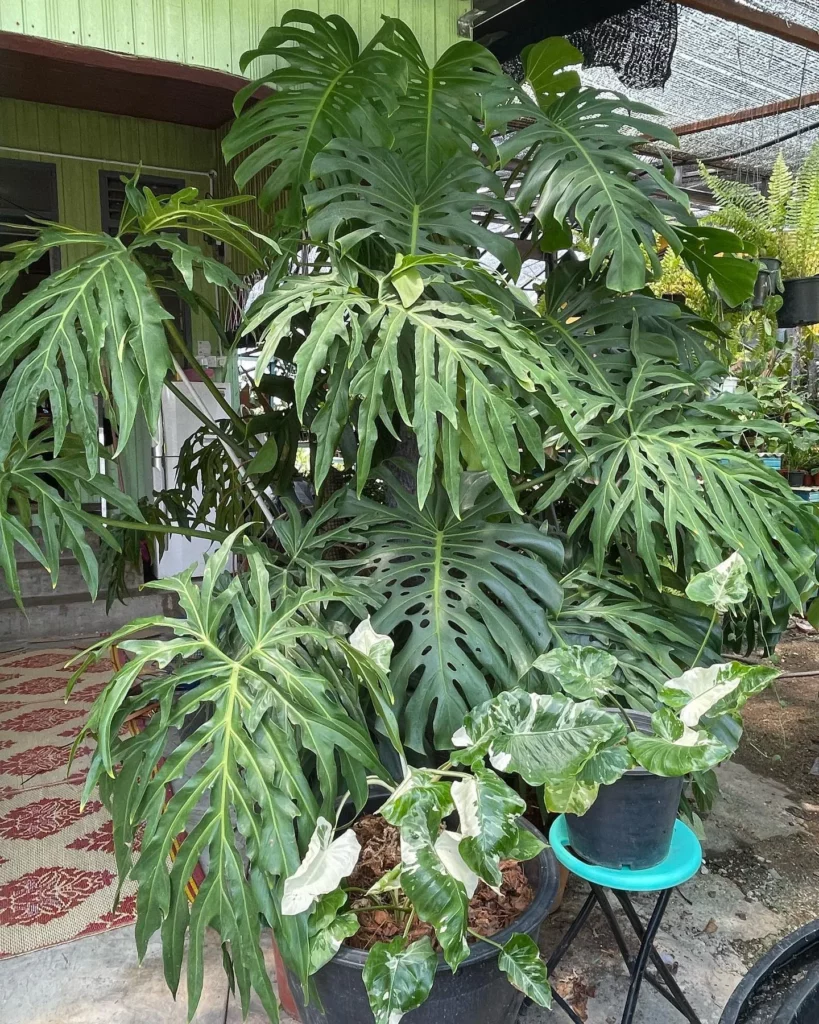
When it comes to propagating Philodendron, follow these tips for successful results. The number one rule is to only propagate from healthy plants that are disease-free, pest-free, and stress-free. This ensures that your propagated plants have the best chance of thriving. Avoid propagating recently repotted plants or those recovering from chronic underwatering, as they may not have the necessary energy to support new growth. It is also essential to choose the right timing for propagation. Spring and summer are the best seasons for propagation, as the plant is actively growing and in the best condition to produce new roots.
The Benefits of Philodendron Propagation
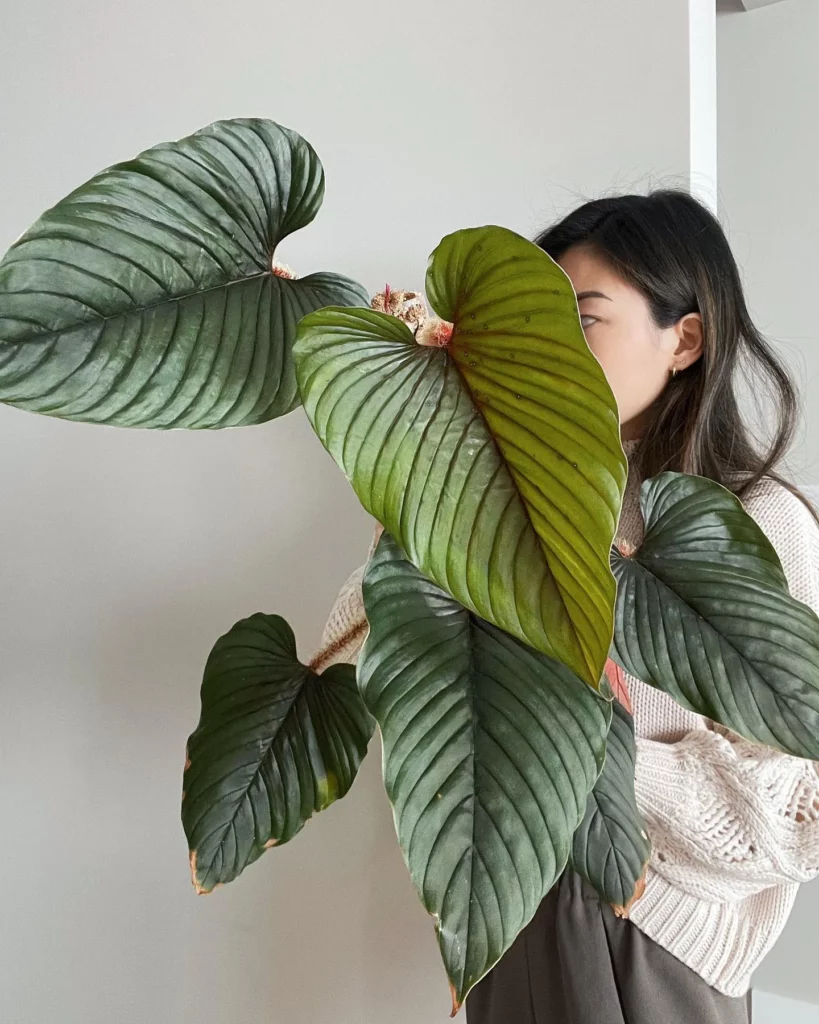
Propagating Philodendron offers several benefits for plant enthusiasts. It allows you to expand your plant collection without spending extra money. Additionally, propagation can help promote bushier growth in your existing Philodendron plants, making them more visually appealing. Propagating Philodendron also offers the opportunity to share living gifts with friends and family, which can be a thoughtful and personalized gesture. By mastering the art of propagation, you can enhance your indoor garden and enjoy the rewards of growing new plants.
Philodendron Water Propagation Tips



If you choose to propagate Philodendron using the water method, follow these tips for optimal success. When placing the cuttings in water, make sure that the leaf nodes are fully submerged to encourage root growth. It is important to change the water regularly, especially if it becomes cloudy, to maintain a clean and healthy environment for the cuttings. Be patient during the rooting process, as it can take a few weeks for roots to develop. Monitor the cuttings for small white roots growing from the nodes, indicating that they are ready to be planted in soil.
Philodendron Water Propagation Tips
| Tip | Description |
|---|---|
| Submerge leaf nodes | Make sure the leaf nodes are fully submerged in water to promote root growth. |
| Change water regularly | Regularly replace the water to keep it clean and prevent the buildup of bacteria or algae. |
| Be patient | Root development takes time, so be patient and allow a few weeks for roots to grow. |
| Monitor for root growth | Check for small white roots growing from the nodes, indicating that the cuttings are ready for planting. |
Philodendron Soil Propagation Tips

If you prefer propagating Philodendron through soil, there are a few tips you should follow to ensure optimal results. As a first step, prepare a pot with good drainage by using a well-draining potting mix. This will help prevent waterlogging and provide the ideal moisture levels for root development. To further enhance root growth, consider using a rooting hormone before planting the cuttings. You can either opt for a commercial rooting hormone or use cinnamon, which acts as a natural fungicide and promotes root development.
When planting the cuttings, make sure that the nodes are below the soil surface to encourage root growth. Gently pat the soil around the cuttings to secure them in place. To support overall plant health, provide appropriate care and conditions such as adequate sunlight, regular watering, and maintaining optimal temperatures. With these tips, your propagated Philodendron cuttings should thrive and establish a strong root system.
Philodendron Propagation – Water vs. Soil



The choice between water and soil propagation for Philodendron depends on personal preference and the specific needs of the plant. Both methods have their pros and cons, and understanding them will help you make an informed decision.
Water Propagation
Water propagation is a beginner-friendly method that requires minimal materials. It offers the advantage of visibility, allowing you to observe root development before planting the cuttings in soil. This method involves placing the stem cuttings in a glass or jar filled with water, ensuring that the leaf nodes are fully submerged. Over time, you’ll see small white roots growing from the nodes, indicating that the cuttings are ready for planting in soil.
However, water-grown plants may take longer to transition to soil and establish a robust root system. The process from water to soil can be delicate and requires careful transplantation to prevent damaging the developing roots.
Soil Propagation
Soil propagation provides a more natural environment for the cuttings and allows for a seamless transition to regular plant care. It involves planting the stem cuttings directly into moist, well-draining potting mix. This method mimics the plant’s natural growth conditions and supports quick root establishment.
To enhance the success rate of soil propagation, you can consider using rooting hormone or cinnamon as natural rooting aids. These substances promote root development and help prevent disease or fungal infection.
While soil propagation requires additional materials and preparation, it offers the advantage of a smoother transition for the cuttings and faster establishment of a strong root system.
Ultimately, the choice between water and soil propagation depends on your preferences and the needs of your Philodendron plants. If you enjoy closely monitoring the root development, water propagation may be the method for you. On the other hand, if you prefer a more natural and straightforward process, soil propagation is a great option. Regardless of the method you choose, remember to provide the appropriate care and conditions for the propagated plants to thrive.
How to Care for Propagated Philodendron Plants

Once you have successfully propagated your Philodendron plants, it is important to provide them with proper care to ensure their health and growth. One of the key aspects of caring for propagated Philodendron is watering. It is essential to keep the soil or water evenly moist, but be cautious not to overwater, as this can lead to root rot. Regularly check the moisture level and adjust your watering schedule accordingly.
In terms of lighting, Philodendrons thrive in bright, indirect light. Find a location in your home that receives ample sunlight but avoids direct exposure, as it can cause sunburn and damage the leaves. Placing your propagated Philodendron near a north or east-facing window is usually ideal.
Temperature is another crucial factor for the growth of propagated Philodendron plants. They prefer temperatures between 65-85°F (18-29°C). Avoid extreme fluctuations in temperature and keep the plants away from cold drafts or heat sources that can stress the plants.
As your propagated Philodendron plants develop and establish themselves, you can continue caring for them as you would for mature Philodendron plants. This includes regular fertilization, pruning to encourage bushier growth, and monitoring for any signs of pests or diseases. By providing proper care, you will ensure the health and vitality of your propagated Philodendron plants, allowing them to flourish in your indoor garden.
FAQ
How to propagate Philodendron in water?
Propagating Philodendron in water is a simple and effective method. Choose healthy stems with several leaves, cut them just below a leaf node, and remove the leaves from the bottom half of the stem. Place the cuttings in a glass or jar filled with water, ensuring that all the leaf nodes are submerged. Keep the jar in a warm place with bright, indirect light and change the water regularly. After a few weeks, you should notice small white roots growing from the nodes, indicating that the cuttings are ready to be planted in soil.
When is the best time to propagate Philodendron?
The best time to propagate Philodendron is in the spring or summer when the plant is actively growing. This is when the plant is best able to produce new roots and establish itself. If your plant is looking long and leggy, it may be time for pruning, which is also best done during these seasons. Propagating in the fall or winter is possible but may take longer for the cuttings to grow roots.
How do I choose the right Philodendron variety for propagation?
When choosing a Philodendron variety to propagate, you can focus on trailing philodendrons with heart-shaped leaves that grow on long vines, such as Philodendron hederaceum. Other options include self-heading philodendrons like Philodendron ‘Birkin’, Philodendron ‘Congo Rojo’, and Philodendron ‘Pink Princess’, which have an upright growth habit from a thick central stem rather than trailing vines.
What materials do I need for Philodendron propagation?
To propagate Philodendron, you will need clean and sharp scissors or pruning shears for taking stem cuttings, a glass or jar for water propagation, potting mix for soil propagation, small plant pots, and optional rooting hormone.
How do I propagate Philodendron in water?
To propagate Philodendron in water, choose healthy stems with several leaves, take six-inch cuttings just below a leaf node, remove the leaves from the bottom half of the stem, and place the cuttings in a glass or jar filled with water, ensuring that all the leaf nodes are submerged. Keep the jar in a warm place with bright, indirect light and change the water regularly. After a few weeks, you should see small white roots growing from the nodes. Once the roots are at least one inch long, you can plant the cuttings in moist potting mix.
How do I propagate Philodendron in soil?
To propagate Philodendron in soil, select healthy stems with several leaves, take six-inch cuttings, remove the leaves on the lower half of the cuttings, fill a small plant pot with potting mix, moisten the potting mix, and plant each cutting in the soil, ensuring that each node is below the soil surface. Place the pot in a warm and humid location with bright, indirect light, and keep the soil evenly moist. In a few weeks, you should see new growth and roots forming.
How should I care for propagated Philodendron cuttings?
When caring for propagated Philodendron cuttings, make sure to keep the soil or water evenly moist but not overly saturated. Place the cuttings in a warm area with bright, indirect light, and avoid exposing them to direct sunlight or cold drafts. Maintain temperatures between 65-85°F (18-29°C) and provide the appropriate care as the plants develop.
How can I propagate non-trailing Philodendrons?
For non-trailing Philodendrons, one method of propagation is division. During repotting, separate offshoots from the parent plant and repot them in slightly larger containers than their existing roots. Another method is through stem cutting. Select a stem cutting with a few nodes and aerial roots, make a diagonal cut below the selected node, place the cutting in a jar of room temperature water, and change the water every few days. Once the roots have reached about one inch in length, the cutting can be planted in moist, well-draining soil.
What are some tips for successful Philodendron propagation?
When propagating Philodendron, only take cuttings from healthy plants that are disease-free and pest-free. Choose the right timing for propagation, ideally during the spring or summer when the plant is actively growing. It is also important to follow the specific propagation methods for trailing and non-trailing varieties. Provide proper care for the propagated cuttings, including appropriate watering, lighting, and temperature conditions.
What are the benefits of Philodendron propagation?
Propagating Philodendron allows you to expand your plant collection without spending extra money. It can also help promote bushier growth in your existing Philodendron plants, making them more visually appealing. Propagation offers the opportunity to share living gifts with friends and family, which can be a thoughtful and personalized gesture.
What are some tips for Philodendron water propagation?
When propagating Philodendron in water, make sure that the leaf nodes are fully submerged to encourage root growth. Change the water regularly, especially if it becomes cloudy, to maintain a clean and healthy environment for the cuttings. Be patient during the rooting process, as it can take a few weeks for roots to develop. Monitor the cuttings for small white roots growing from the nodes, indicating that they are ready to be planted in soil.
What are some tips for Philodendron soil propagation?
When propagating Philodendron in soil, use a well-draining potting mix and consider using a rooting hormone or cinnamon to stimulate root growth. Plant the cuttings in the moist potting mix, ensuring that the nodes are below the soil surface, and provide the appropriate care and conditions for the roots to establish and thrive.
Which is better, Philodendron propagation in water or soil?
The choice between water and soil propagation for Philodendron depends on personal preference and the specific needs of the plant. Water propagation offers the advantage of visibility, allowing you to observe root development before planting in soil. It is also a beginner-friendly method that requires minimal materials. However, water-grown plants may take longer to transition to soil and establish a robust root system. Soil propagation provides a more natural environment for the cuttings and allows for a seamless transition to regular plant care. It may require additional materials such as rooting hormone or cinnamon. Consider your preferences and the needs of your Philodendron when choosing the propagation method.
How should I care for propagated Philodendron plants?
When caring for propagated Philodendron plants, water them regularly, keep them in bright, indirect light, and maintain temperatures between 65-85°F (18-29°C). Provide the appropriate care as the plants develop and establish themselves.


